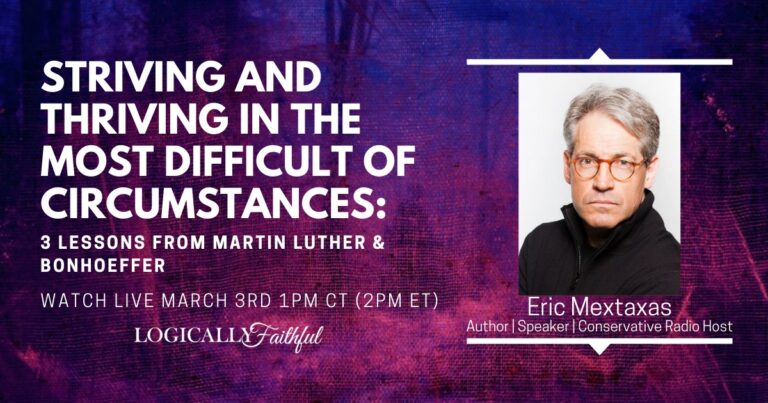Søren Kierkegaard—the brooding, brilliant Danish philosopher of the 19th century—was a man who wrestled with the deepest existential dilemmas: the nature of faith, the agony of choice, and the terrifying burden of individuality. He was a psychologist before psychology existed, a theologian who challenged dogma, and a poet of the inner life whose writings dissected the human soul with unparalleled precision. His concept of the three stages of existence—the aesthetic, the ethical, and the religious—is not merely a theoretical framework but a map of spiritual and psychological transformation. It is a journey from hedonism to duty, from duty to divine surrender, and it speaks directly to the modern crisis of meaning.
To understand Kierkegaard is to grapple with a man who refused to settle for superficial answers. Born in 1813 in Copenhagen, he was haunted by his father’s melancholic piety and the weight of original sin. Kierkegaard’s own life was marked by suffering—a broken engagement with Regine Olsen, public ridicule, and a relentless self-examination that bordered on the masochistic. Yet, it was precisely this suffering that forged his philosophy. He did not write to impress academics; he wrote to awaken individuals to the existential task of becoming authentic. And that task, as he saw it, required passage through the three stages of life. Kierkegaard’s stages are not a linear progression but an existential crucifixion—each level demands the death of the previous self. The aesthetic hedonist must crucify his appetites. The ethical moralist must crucify his pride. And the religious pilgrim? He must crucify reason itself—not by abandoning it, but by recognizing its limits. This is the scandal of faith: You are called to trust what you cannot prove, to love what you cannot control, to surrender to a Voice that speaks in the silence beyond the noise of your own mind. Nietzsche sneered at this as weakness, but Kierkegaard knew the truth: It takes more courage to kneel than to conquer.
STAGE ONE: THE AESTHETIC LIFE – DROWNING IN THE SHALLOWS
The Seduction of Sensation
The aesthetic stage is where most people begin—and where many remain trapped. This is the realm of immediacy, sensation, and pleasure-seeking. The aesthete is the consummate consumer: of art, of romance, of novelty, of intoxicants. He is Don Juan, flitting from conquest to conquest; he is the bored aristocrat, chasing distraction to avoid the gnawing emptiness within. Kierkegaard’s pseudonymous aesthete, Johannes Climacus, embodies this in Either/Or: a man who constructs his life around moods and whims, refusing commitment because commitment demands sacrifice.
But here’s the catch—the aesthetic life fails. It fails because pleasure is fleeting, and when the music fades, despair creeps in. The aesthete may laugh, seduce, and indulge, but beneath the surface lurks the terror of meaninglessness. Kierkegaard’s insight here is profound: the aesthetic stage is not wrong because it is immoral, but because it is unstable. It cannot sustain the weight of human consciousness. Eventually, the individual must confront a choice: continue drifting into nihilism or take the first step upward—toward the ethical.
The aesthetic life is humanity’s default mode—a desperate scramble for pleasure, novelty, and distraction. Kierkegaard called it “living in immediacy,” a state where the self is little more than a weathervane, spinning with every gust of desire.
- The Partygoer drinks to forget his emptiness.
- The Social Media Addict refreshes her feed, craving the next dopamine hit.
- The Serial Dater hops from romance to romance, terrified of commitment.
They are all running from the same thing: the terror of being alone with themselves.
The Dead End of Pleasure
Imagine a man in a hall of mirrors, each reflection offering a new distortion of himself. He laughs at first, entertained by the illusions—but eventually, he realizes none of them are real. The aesthetic life is like this: a carnival of distractions where nothing satisfies because nothing is substantial.
Warning:
“Pleasure is a weak god. It cannot bear the weight of your worship.”
The aesthete’s despair is subtle but corrosive: a gnawing sense that none of this matters.
The First Crisis: When the Music Stops
Every aesthetic life eventually hits a breaking point—a moment when the distractions fail, and the soul screams:
“Is this all there is?”
For some, this leads to Stage Two.
For others, it leads to a lifetime of numbing the question.
STAGE TWO: THE ETHICAL LIFE – THE TYRANNY OF “SHOULD”
The Turn Toward Duty
This second stage, the ethical stage is where one trades the chaos of impulse for the order of principle. This is the domain of marriage, career, social responsibility—the world of Kant’s categorical imperative and Hegel’s communal morality. The ethical individual, like Kierkegaard’s Judge William (again in Either/Or), chooses to bind himself to duty. He marries, he keeps his promises, he submits to the universal laws of good and evil.
But Kierkegaard, ever the dialectician, does not let us rest here. The ethical stage, while nobler than the aesthetic, contains its own fatal flaw: it cannot account for the exception. What happens when duty conflicts with desire? When the moral law clashes with the absurdity of faith? Abraham, in Fear and Trembling, is Kierkegaard’s archetype of this crisis. God commands him to sacrifice Isaac—an act that is ethically monstrous but religiously imperative. Here, Kierkegaard reveals the limits of mere morality: the ethical stage, for all its dignity, cannot resolve the ultimate paradox of existence.
The ethical life is a rebellion against the chaos of Stage One. Here, the individual embraces responsibility, virtue, and moral law.
- The Activist fights for justice.
- The Devoted Parent sacrifices for their children.
- The Conscientious Worker strives for excellence.
At its best, this stage is noble. But Kierkegaard saw its fatal flaw: It still centers on the self–it is not enough.
The Trap of Moral Self-Construction
Imagine a man building a tower of bricks labeled “Good Deeds.” Each brick is a moral act—helping others, keeping promises, living with integrity. But the higher the tower, the more he fears its collapse.
“If you are simply trying to be ‘good,’ your goodness will turn into pride—and pride is the sin that damns you.”
The ethical life is a treadmill of “not enough.” You do good, but you know your motives are mixed. You help others, but you crave their approval. You strive for virtue, but you fail—and then you hate yourself for failing.
The Crack in the Moral Facade
Every ethical life eventually faces a moment of devastating honesty:
“I am not as good as I pretend to be.”
For some, this leads to Stage Three.
For others, it leads to self-righteousness or despair.
STAGE THREE: THE SPIRITUAL LIFE – THE LEAP INTO FAITH
The Collapse of Self-Sufficiency
The religious stage begins with a shattering realization: You cannot save yourself.
The religious stage is Kierkegaard’s pinnacle—the realm of Abraham, of Job, of the individual who stands alone before God. This is not institutional religion, not the complacent Christianity of Sunday rituals, but the anguished, personal encounter with the divine. The religious individual transcends ethics not by rejecting it, but by submitting to a higher law—one that may appear absurd to the rational mind.
Kierkegaard’s faith is not comfort; it is fear and trembling. It is the recognition that truth is subjective, that God cannot be proven but must be lived. In Concluding Unscientific Postscript, he writes, “The thing is to find a truth which is true for me, to find the idea for which I can live and die.”The religious stage is where one embraces the paradox, where one leaps into the abyss, trusting in a meaning beyond comprehension.
In his The Sickness Unto Death, Kierkegaard discusses despair as the critical condition for encountering God and finding meaning in life:
“Whether you are man or woman, rich or poor, dependent or free, happy or unhappy; whether you bore in your elevation the splendour of the crown or in humble obscurity only the toil and heat of the day; whether your name will be remembered for as long as the world lasts, and so will have been remembered as long as it lasted, or you are without a name and run namelessly with the numberless multitude; whether the glory that surrounded you surpassed all human description, or the severest and most ignominious human judgment was passed on you—eternity asks you and every one of these millions of millions, just one thing: whether you have lived in despair or not, whether so in despair that you did not know that you were in despair, or in such a way that you bore this sickness concealed deep inside you as your gnawing secret, under your heart like the fruit of a sinful love, or in such a way that, a terror to others, you raged in despair. If then, if you have lived in despair, then whatever else you won or lost, for you everything is lost. Eternity does not ask about what you have become—that was the temporal’s concern—but about what you have been in despair; it asks not whether you triumphed or were triumphed over in the world, but whether you defied the world in despair; it asks not whether you kept your reputation or lost it, but whether you kept yourself or lost yourself in despair. If you have lost yourself in despair, then even if you won the whole world, you have lost everything. But if you have not despaired, then even if you lost everything in the world, you have nevertheless won everything.”
—Søren Kierkegaard, The Sickness Unto Death (trans. Howard V. Hong and Edna H. Hong)
This passage is one of Kierkegaard’s most piercing indictments of inauthentic existence. Despair (Fortvivlelse in Danish) is not merely sadness or depression—it is the sickness of the self that refuses to acknowledge its need for God. Kierkegaard argues that despair is universal, whether recognized or not, and that it manifests in three key forms:
- The despair of not knowing one is in despair (ignorant self-deception).
- The despair of weakness (a hidden, gnawing anguish).
- The despair of defiance (active rebellion against God or meaning).
The critical turning point is this: only by confronting despair can one truly turn toward faith. Despair is the precondition for encountering God because it strips away illusions of self-sufficiency. As Kierkegaard writes elsewhere in the book, “Before God, man is always in the wrong”—meaning that human striving, without divine grace, is ultimately futile–and before God every man can finally become right.
Thus, the passage is not just a warning but a paradoxical hope: only by losing the world (and oneself) can one gain eternity. This is the essence of Kierkegaard’s “infinite resignation” and the leap to faith—a theme central to Fear and Trembling as well. The person who clings to worldly success, reputation, or even moral certainty without God is, in Kierkegaard’s eyes, already lost. But the one who despairs rightly—who faces the abyss and cries out for salvation—has already begun the journey toward truth.
Why do so few reach the religious stage? Because the abyss of God’s transcendence terrifies us. The aesthetic life is a numbing agent, the ethical life a moral anesthetic—both shield us from the vertigo of standing before the Infinite. Dostoevsky’s Grand Inquisitor accused Christ of demanding too much, offering bread instead of freedom. And we do the same: We trade the unbearable lightness of divine love for the comfortable weight of rules or revelry. But Kierkegaard’s question haunts: “What if the only way to find yourself is to lose yourself in God?”
The Paradox of Suffering: The Furnace of Transformation
Here’s the brutal truth the aesthetic stage avoids and the ethical stage rationalizes: Suffering is not an obstacle to the spiritual life—it is the path. The religious stage is not about avoiding pain but finding meaning within it. When Job’s world collapsed, his friends preached moral formulas. God answered from the whirlwind—not with explanations, but with Presence. This is the Kierkegaardian leap: to trust that the Absurd (the crucifixion, the silence, the agony) is not the absence of God but His most profound proximity. As C.S. Lewis wrote after his wife’s death: “Pain insists upon being attended to. God whispers to us in our pleasures, speaks in our conscience, but shouts in our pains.”
The Illusion of Autonomy: Why Your ‘Self’ is a Fiction
Modernity screams the lie of self-creation: “You are your own god!” But Kierkegaard dismantles this with ruthless precision. The “self” you’re so desperate to actualize is a mirage—a shifting shadow without the Light that grounds it. “The self is a relation which relates itself to itself,” he wrote, “but only by relating itself to the Power which posited it.” Translation: You are not your own. Your breath is borrowed. Your will is derivative. The religious stage smashes the idol of autonomy and forces the question: Will you rage against your contingency, or will you bow before the One who whispers, ‘I AM’?
The Final Challenge: Choose Your Despair
Kierkegaard’s ultimate warning: You will despair either way. The aesthete despairs of boredom, the moralist of failure—but the religious pilgrim? He despairs of God. Not because God is absent, but because His holiness annihilates all pretenses. This is the “sickness unto death”—the agony of being seen by Infinite Love. Yet here’s the paradox: Only in this despair is there hope. As Tim Keller put it: “The gospel is this: You are more sinful than you ever dared believe, but more loved than you ever dared hope.”
Why This Journey Matters
Kierkegaard’s stages are not linear; they are spirals. One may regress, stall, or oscillate between them. But their power lies in their diagnosis of the human condition. In an age of mass distraction, of political tribalism, of shallow consumer identities, Kierkegaard’s framework forces us to ask: At what stage am I living? Am I a slave to pleasure? A prisoner of duty? Or have I dared the terrifying freedom of faith?
This is not abstract philosophy—it is a call to arms. To choose is to suffer, but to refuse to choose is to forfeit your soul. Kierkegaard’s gift to us is the realization that the path to authenticity is through crisis, through struggle, through the unbearable weight of becoming. And that, my friends, is a journey worth taking.
- The Moralist realizes his goodness is filthy rags.
- The Philosopher admits reason cannot answer the deepest longings.
- The Achiever finally sees that success cannot fill the void.
This is Kierkegaard’s “leap of faith”—not irrationality, but a surrender to the God who “is beyond all systems, all moralities, all human categories.”
The Crucible of Suffering
Imagine a man clinging to a cliff. Below him, the abyss of meaninglessness. Above him, an unreachable ledge. His fingers are slipping.
Then, a Voice: If you trust me, ‘Let go.”
To leap is to trust that something—Someone—will catch him.
The Choice Between Despairs
Kierkegaard’s brutal truth: All lives lead to despair.
- Aesthetic despair = The emptiness of pleasure.
- Ethical despair = The exhaustion of self-justification.
- Religious despair = The terror of being fully known by God.
But only one despair leads to life.
CONCLUSION
You are already in one of these stages. The question is: Will you stay there?
- If you’re in Stage One, ask yourself: “What am I running from?”
- If you’re in Stage Two, ask yourself: “Who am I trying to impress?”
- If you’re in Stage Three, ask yourself: “Do I really trust Him?”
The ladder is there.
Climb.
I also created a lecture on this for my students available here:
Time: Jun 9, 2020 11:00 AM Central Time (US and Canada)
“For success, like happiness, cannot be pursued; it must ensue, and it only does so as the unintended side-effect of one’s personal dedication to a cause greater than oneself or as the by-product of one’s surrender to a person other than oneself. Happiness must happen, and the same holds for success: you have to let it happen by not caring about it.”― Viktor E. Frankl, Man’s Search for Meaning
Podcast: Play in new window | Download



